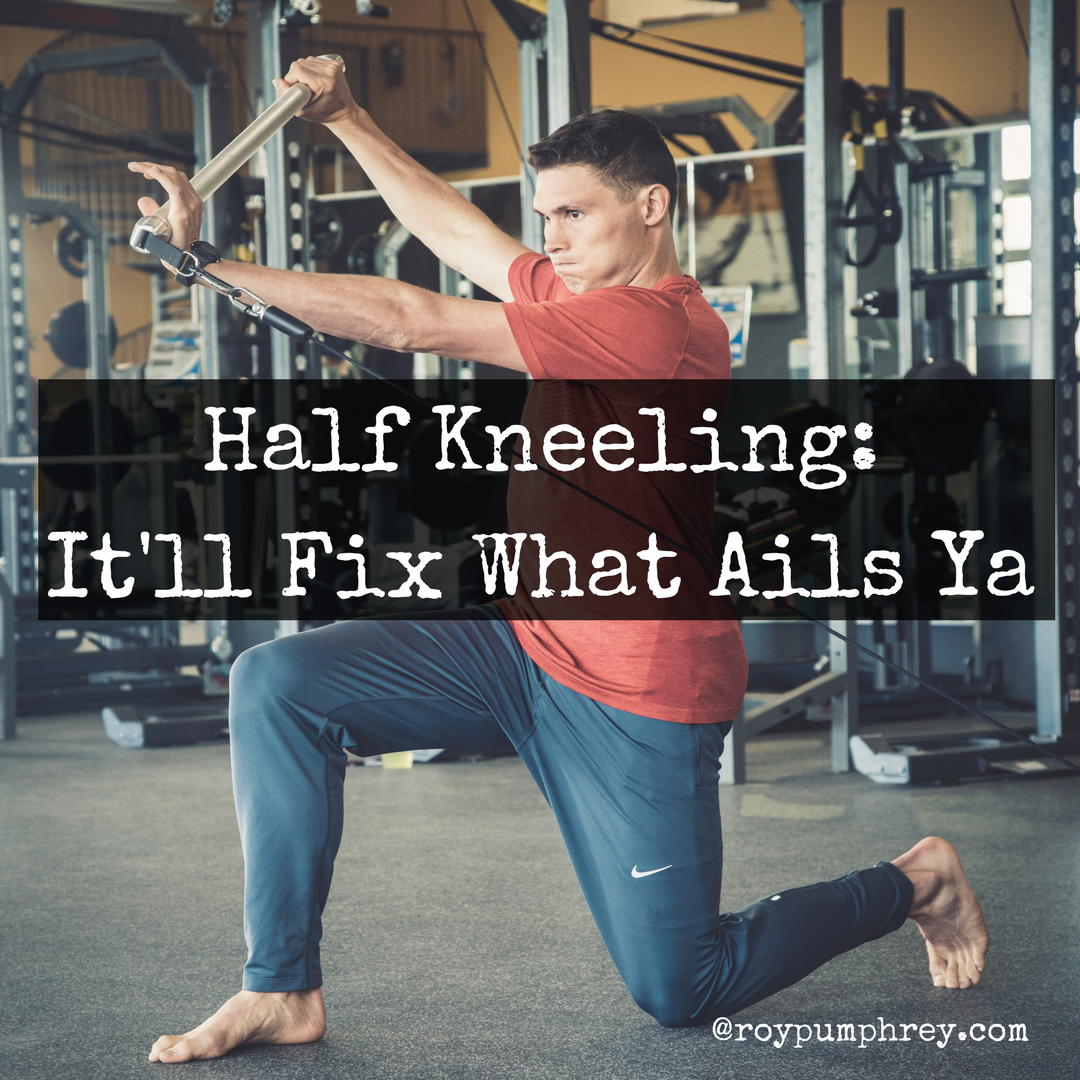Q: What Makes Everything Harder?
A: Half Kneeling…
Do it in half kneeling and it’s harder.
Shoulder Press
Corner Press
Cable Row
Pallof Press
Do them in half kneeling, go ahead, use less weight…
Its harder.
Why?
In the words of Gray Cook:
“Tall and Half Kneeling Positions force you to OWN your position”
In My Words,
“You Can’t Half-Ass, Half-Kneeling”
When in Half-Kneeling it’s really tough to hide your weaknesses with NO LOAD.
Add even minimal loads and there’s no denying it.
Half-Kneeling is an Inherently Unstable Position.
Yes, it tries to put you on your ass.
Unless you align, activate, brace and move with solid, effective “movement strategies”.
The base of support is fixed at hip width or more narrow. Narrowing the base can further increase the demand on trunk musculature, and requires the athlete to stabilize reflexively with intrinsic musculature throughout the body – as opposed to simply widening their base of support and “hanging on their joints and ligaments” In addition, balance overcorrections will lead to you falling on your butt. Holding your breath will exacerbate this. There is nowhere to hide. You need reflexive, well-timed contractions from head to toe as well as breath control, in order to remain stable. This is a theme that carries over to all athletic endeavors. – Dr. Quinn Henoch
Basically, you’re going to topple over in Half- Kneeling unless you:
- Get your ass on (pelvis in neutral)
- Obliques FIRE HARD (ribcage “down”)
- Front side foot PLANTED (whole foot, arch set, gripping the floor)
- Maintaining the center of gravity “back” in the core when creating movement through the upper extremities.
If you tend to make any of the following “movement errors” or compensations Half- Kneeling will bring them to light immediately:
- Holding foot pressure in the ball of the foot and toes (lack of heel pressure and arch control/ “passive foot”)
- “Hanging off the low back” <—lack of glute activation and ability to achieve/ maintain and own a neutral pelvis
- Popping up the ribcage (“hanging off the low back” again) inability to activate the obliques
- “Sitting” back in the hips <—-crease at the hip-joint, usually the result of an inactive back foot helping to drive the hip forward.
Why Half-Kneeling Works:
Science Speak:
“Core muscle activity is best understood as the pre-programmed integration of local, single-joint muscles and multi-joint muscles to provide stability and produce motion. This results in proximal stability for distal mobility, a proximal to distal patterning of generation of force, and the creation of interactive moments that move and protect distal joints.” -Kibler
Real World Speak:
Proximal Stability = Distal Mobility
If you can’t stabilize through the trunk/ core.
You can’t “unlock” the mobility of your extremities.
A Half Kneeling How Too:
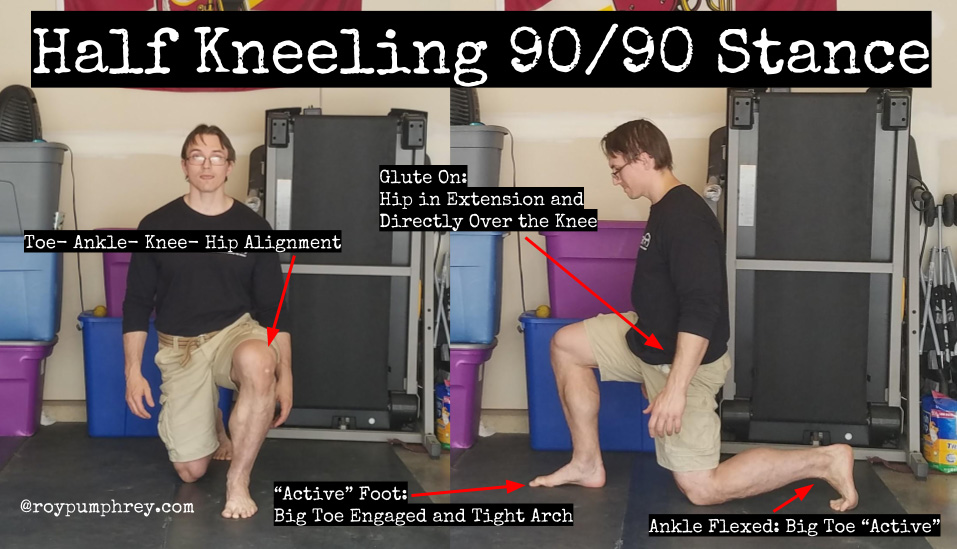
Checklist:
- “Narrow” Base of Support
- Generally Toes, Ankle, Knee, Hip alignment is where you want to start.
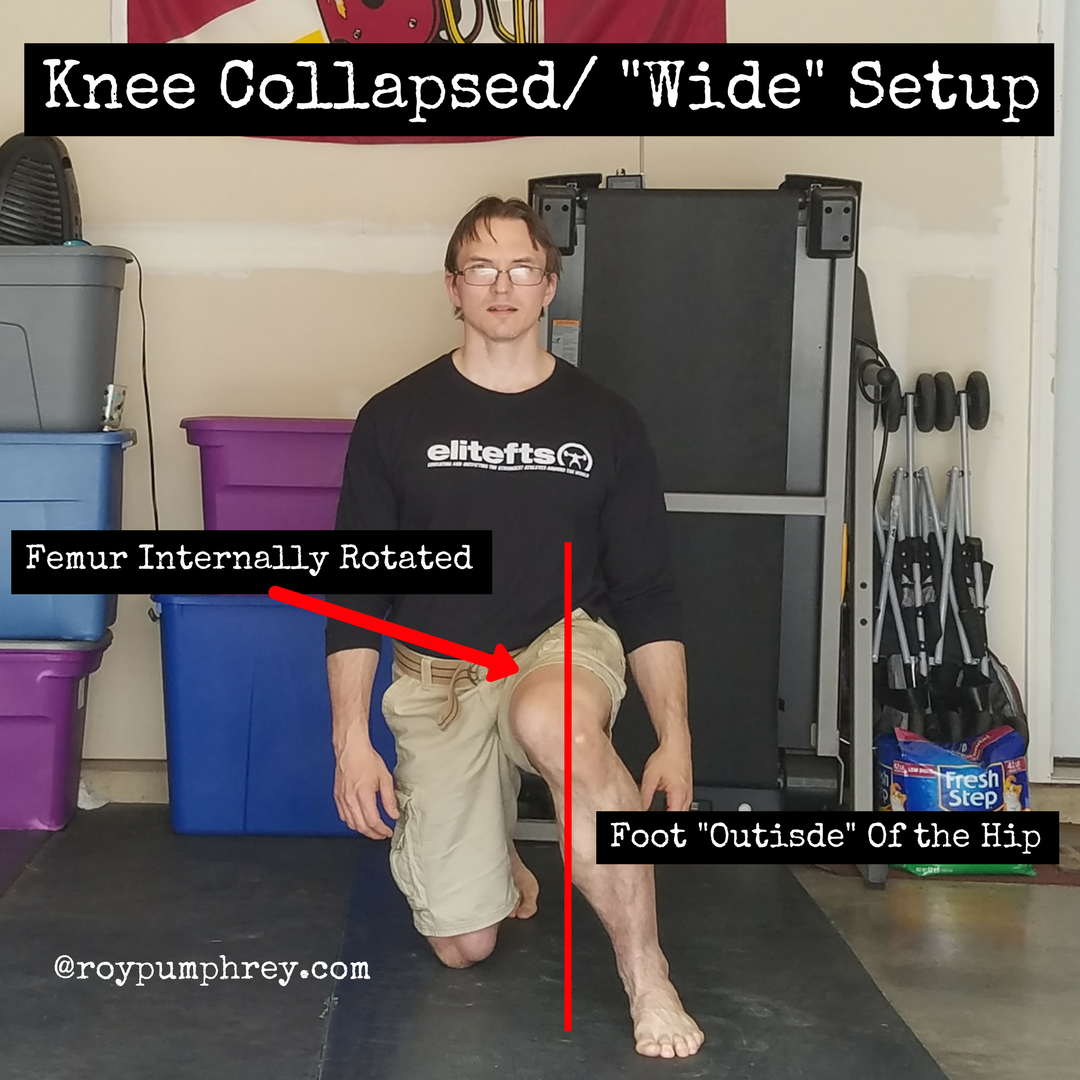
- This goes for the front and back side.
- Glute ON
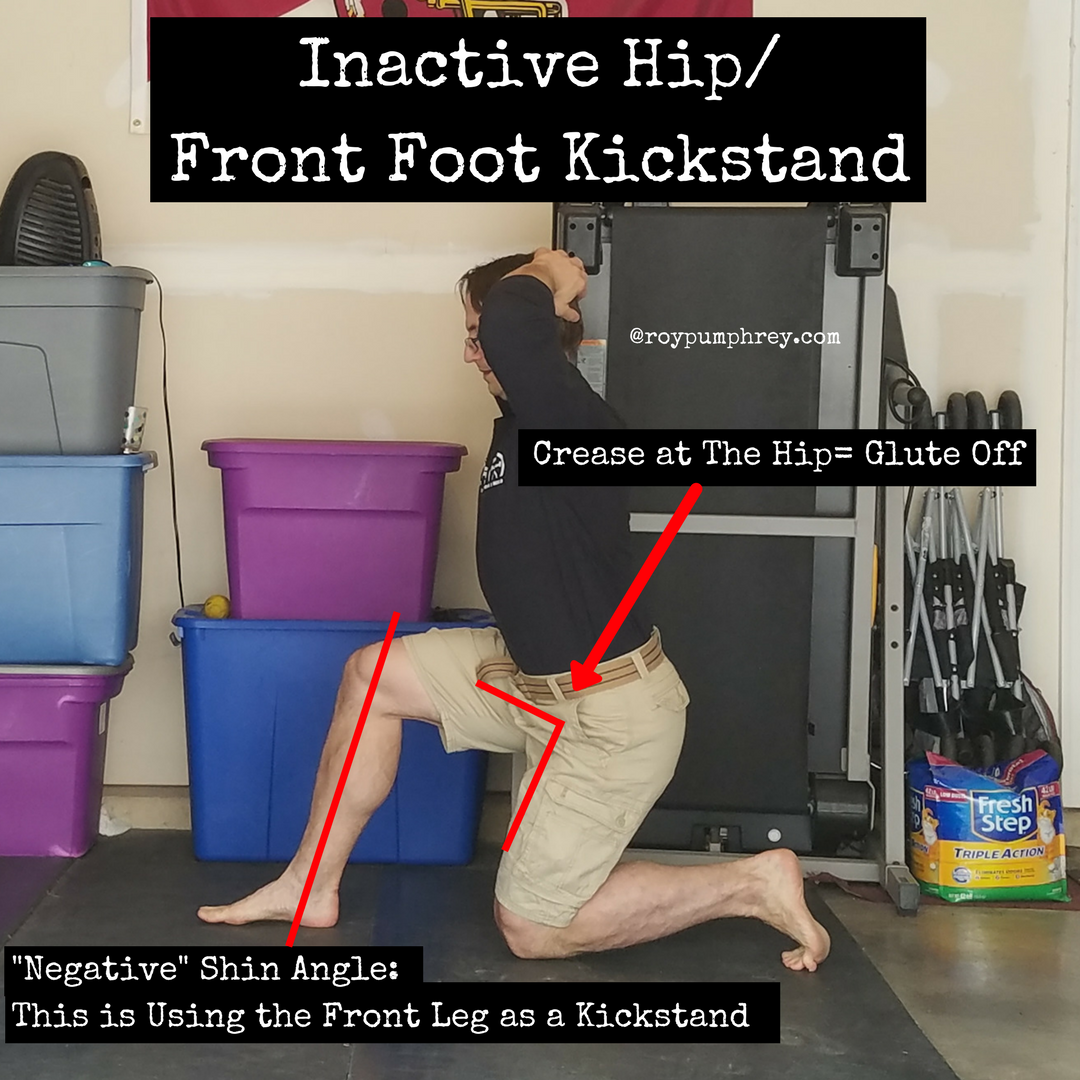
Once you can own this position, narrow that sh@t up.
- Active feet.
- Front foot ROOTED. Heel pressure, big toe pressed down, gripping the floor, creating an active arch
- Back ankle flexed and big toe in the ground
- Neutral Pelvis
- Ribcage Down
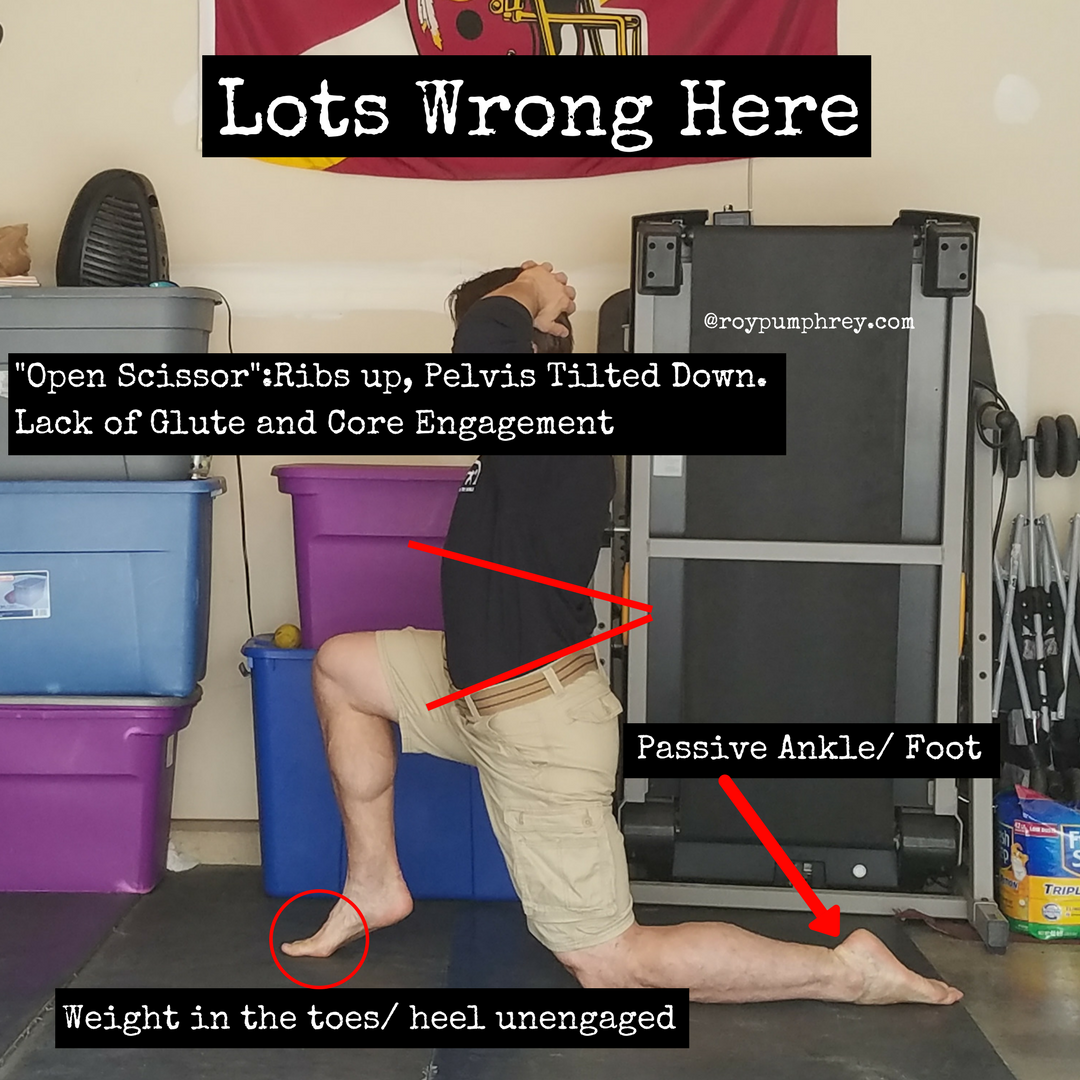
Good Tutorial Here: The Half-Kneeling Position: Why it is Beneficial and How to Set up For it
Why To Do half Kneeling?
Half- Kneeling Tells You Where You Suck:
Asymmetries come to the fore front.
Immediately.
Like I said, you can’t hide.
You’re going to notice a left to right difference and that’s ok. <—-slight asymmetries are NORMAL
Unless, it’s a matter of I can do the movement on one side and can’t do it on the other, then, that’s a BIG problem and needs to be addressed.

